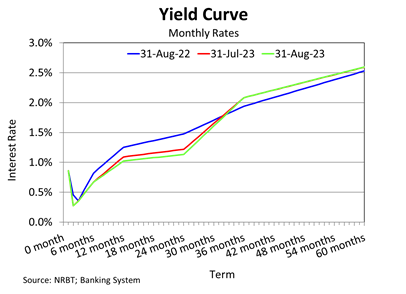Annual headline inflation slipped back to deflation
- Details
- Category: Economic Release
- Created: 30 June 2016
| Inflation April 2016 |
||||
| Apr 16 | Mar 16 | Feb 16 | Jan 16 | |
| Headline * | -0.9 | 1.4 | -0.3 | -1.3 |
| Domestic ^ | 2.8 | 5.2 | 3.9 | 2.6 |
| Imported ^ | -3.7 | -3.7 | -4.2 | -3.9 |
| Underlying * | 6.2 | 10.8 | 8.3 | 6.8 |
| * Year-ended growth | ||||
| ^ Percentage point contribution to year-ended growth | ||||
Annual headline inflation slipped back to deflation
The shortage in supply of Kava-Tonga continues, driving a slight increase in the Consumer Price Index (CPI) over the month by 0.2%. The export of Kava-Tonga in April fell due to short supply. Domestic prices continued to increase by 0.1% driven by a 2.9% rise in the price of Kava-Tonga. This offset a 0.1% decline in domestic food prices particularly on taro tarua leaves, tomatoes, cabbage and capsicum. The favourable weather conditions during the month have contributed to an increase in the exports of taro tarua leaves. The prices for other components such as housing, household operations, clothing & footwear, transportation and miscellaneous goods & services remained unchanged in April 2016.
Imported prices in April also rose by 0.2% after 8 consecutive months of deflation. The global oil prices has started to pick up in March 2016 and recorded an increase of USD$8.47 over the month to $USD47.69 per barrel in April 2016. This is reflected in higher prices for petrol and electricity prices. Imported food prices increased by 0.2%, particularly for food items such as chicken pieces and sugar reflecting the short supply of sugar during the month. The price of cigarettes (Winfield blue) also rose by 0.4%.
The annual headline inflation slipped back to record a deflation of 0.9% in April. This follows an annual headline inflation of 1.4% in March 2016. The turnaround was due to an increase in domestic prices of 12.6% in March outpacing a 6.6% rise in the year ending April. The rise was mainly driven by the increase in the price of Kava-Tonga, which has now doubled. The low supply of Kava-Tonga continues and the price is expected to also increase in the coming months. The increasing excise tax on locally manufactured alcohol also drove a 9.8% increase in the price of alcohol.
Domestic food prices increased as well by 5.9% as a result of higher prices recorded for taro tarua, swamp taro, cassava, yams (early & late), pele leaves, carrots, ripe bananas, watermelon, pineapple, coconuts (brown & green) and stringed fish. This is lower than the 19.4% increase in March. Higher domestic food prices also reflect a lower food production over the year due to the lag effects of unfavourable weather conditions. Prices of housing maintenance goods and services also increased by 6.3% and 2.2% respectively. The increasing demands for household furniture, furniture & textiles caused the prices to rise by 19.7%, indicating ongoing construction activities in the country. This was also supported by a $28.2 million increase in household loans and a lower weighted average lending rate for housing over the year. This offset a 0.4% decline in public transport.
Imported prices declined by 6.5% as a result of decreases in imported food by 11.1%, transportation by 7.0%, household operation by 2.7% and also miscellaneous goods and services by 1.9%. Lower food prices were recorded for almost all items such as mutton flaps, chicken pieces, potatoes, apples, onions and sugar. Price controlled by the Tonga Competent Authority on chicken, sugar, onions and potatoes contributed to the fall. The fall in global oil prices from USD$65.63 per barrel in April 2015 to USD$47.69 per barrel in April 2016 continued to positively impact the lower prices of petrol, diesel and electricity. This offset the rise in prices for clothing & footwear (8.6%), alcohol (7.7%) and house maintenance goods (1.8%).
The annual core inflation rate (excluding energy and imported food) increased by 6.2% indicating the influence of global prices on inflation in Tonga.
On the outlook, the NRBT continues to expect that inflationary pressure will continue to ease in the remaining months of 2015/16 and to record an annual deflation of 1.05% in June 2016 then increase to a peak of 4.7% annual inflation in November 2016 as signs of world oil prices starting to pick up again before falling to 3.06% in January 2017. However, the developments in world oil and food prices pose a risk to this inflation forecast.
Download the full report: Inflation Rate - April 2016

